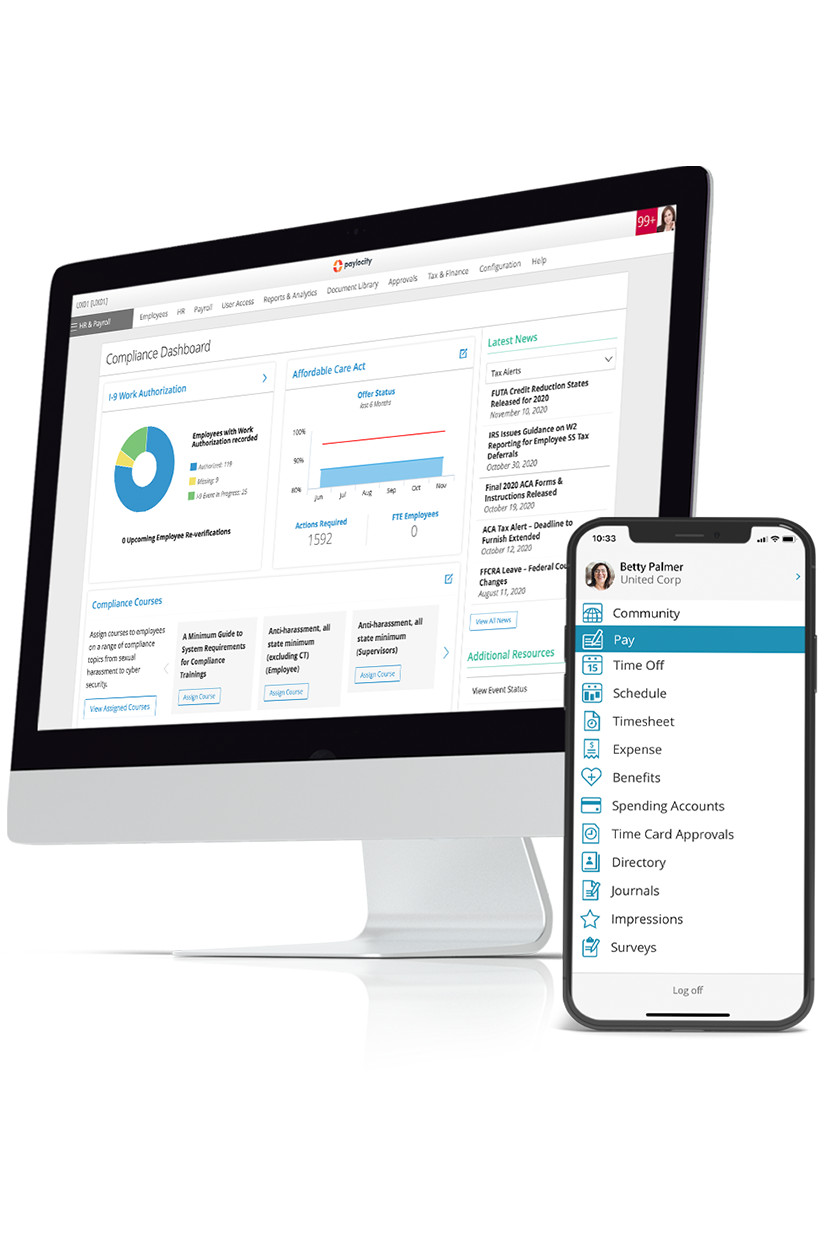Does Your HCM Solution Stink? Paylocity Clients Share Why They Switched
June 12, 2023
There’s no doubt HR teams are facing challenges on every front. A competitive labor market and the need to maintain workforce wellbeing at a time of economic pressure mean HR workloads continue to be extremely high. It’s no wonder one recent study found that 98% of HR professionals feel burned out.
The prevalence of burnout makes choosing the right HR technology more important than ever. To keep your HR team happy and productive, you need a platform that can automate away the repetitive, manual tasks and help them focus on more strategic initiatives. But the same study found that 73% of HR professionals felt they didn't have the tools or resources they need to do their jobs well. Repetitive, manual tasks chip away at available time for more strategic initiatives that deliver business outcomes and heighten HR teams' sense of doing meaningful work.
At the same time, you want a platform that makes employees’ lives easier too — boosting engagement, helping to foster a great culture, and providing data-driven insights to improve the employee experience. But all too often, HR systems hinder rather than help, exacerbating existing headaches.
Why HR Teams Decide They Need a New HRIS
When we talk to our clients, we always explore why their previous systems weren’t hitting the mark — and we’ve found the same pain points come up again and again. Here are some of the common drivers behind why companies are pulling the plug on their old providers and switching to Paylocity:
Too much time spent pulling data and reports
In some cases, clients found their old systems made core HR work such as reporting and payroll overly complex and time consuming. For example, outdoor furniture manufacturer POLYWOOD suffered from the lack of standard reports available in their ADP platform. Instead, they had to devote extra resources to building customized analyses.
Meanwhile, Veneer Chip Transport managed biweekly payroll using Paychex Flex. But setting up pay codes and tax details was hugely labor intensive, with the whole process taking more than a day. Moreover, limited reporting tools in Paychex forced the HR team to track key HR information using cumbersome spreadsheets.
Separate systems create inefficiencies and hassle
Many HR teams rely on multiple systems that are poorly integrated and difficult to use. To cope, they often turn to time-consuming and error-prone manual workarounds. This is an industry-wide problem: Research from the Society for Human Resource Management (SHRM) shows that 75% of HR leaders are impacted by inefficiencies caused by fragmented HR systems.
At the Kentucky Derby Museum, for instance, managing benefits enrollments involved painstakingly pulling and cross-checking data from three different systems. And the limitations of their main Paycor platform required manual interventions at several stages during their recruitment cycle.
Multiple systems caused havoc at POLYWOOD as well — they had to manage recruitment outside their ADP platform using paper printouts, which significantly increased time to hire. Toggling between these systems can lead to errors, wasted time, and overall inefficiencies.
Recurring errors and support standards on the slide
Vendor errors are another frequent pain point that quickly undermines trust and creates additional remedial work for HR teams. Take auto dealer Stevens Creek Chrysler Jeep Dodge, who invested in a Paycom solution only to find errors in every payroll. They then had to spend hours checking for issues and making corrections to ensure employees received accurate pay.
When issues occur, helpful support becomes essential. But clients recall their previous vendors underdelivering on service. Ariel Murphy, Director of Human Resources at the Kentucky Derby Museum, remembers sitting on hold with Paycor for over 45 minutes, before repeatedly explaining the same issues to various support staff.
Inflexible tools lead to poor employee experiences
There is also a sense that some HR systems don’t offer enough for employees. According to Gartner research, 48% of Chief Human Resource Officers believe current HR technologies hinder rather than improve employee experiences. We often hear companies say they can’t give employees self-service access to HR information and services because they’re stuck with systems that just aren’t flexible enough.
For example, at real estate company Watters International, employees felt their ADP system was confusing to navigate, especially when trying to locate paystubs. The effect of these inconvenient systems is that employees constantly call HR for support — adding to an already heavy workload.
Why Paylocity? Comprehensive Platform, Seamless Implementation
To solve all these pain points and more, we provide an integrated HRIS platform with modules to streamline payroll, recruitment, benefits, and onboarding with more than 200 out-of-the-box reports and the option to add customized dashboards.
And beyond core HR, we offer an employee experience layer, with self-service, social collaboration tools, and on demand payment that lets people access paychecks sooner. It’s all backed up with responsive support: We answer the phone in less than a minute and reply to emails the same day.
We make it easy to switch over, too. We know HR leaders hesitate at the thought of a potentially complex implementation. That’s why we provide specialists to handle the data extraction and changeover.
Jennifer Parsons, Director of Administration at Veneer Chip Transport sums up her experience: “Paylocity gave us a timeline and had a plan in place for every week, day, and process, so it was very transparent. And we were online in time to process our W-2 forms and manage the last payroll of the year.”
Learn More: How to Switch Payroll Companies: An 8 Step Payroll Migration Checklist
Reaping the Rewards of Switching
Companies that have switched to Paylocity are seeing major benefits. POLYWOOD can now pull HR reports in an instant, saving 2,000 hours (about 2 and a half months) per year. The Kentucky Derby Museum can complete payroll 95% faster than with Paycor. Watters International and Mutual of Enumclaw value the ease of use of Paylocity, while legal firm Shulman & Hill highlights the platform’s data analytics: “I love the ease of reporting on turnover, salaries, terminations, and new hires, plus the organizational charts,” explains Michelle Bedard, their Head of Human Resources.
For Stevens Creek, it’s the accuracy of payroll and great support from Paylocity that stands out. Darla Romey, Director of HR, notes: “Our Paylocity relationship manager is wonderful. Paylocity’s response to us has been 10 times what Paycom’s was. So, I'm never disappointed that we changed.”
For the Kentucky Derby Museum, it’s the same story with vendor support: Rather than a frustrating wait on hold, Ariel gets through to the Paylocity team straightaway. The level of support gives her confidence she’ll get the answers she needs in a timely manner.
Finally, clients who have been able to shift away from the stress of high-volume transactional HR tasks can now focus on strategy and find ways to help employees thrive. As Ryan Zimmerman, Senior Director of Human Resources at POLYWOOD, puts it: “Paylocity empowered my team to be much more effective, which allows me to work on the business, not in the business.”
If the pain points sound familiar and you’d like to make the switch to Paylocity, we’d love to talk. To learn more about the success of those that have already made the switch, check out other and take some time to compare Paylocity against the competition

HR Tools Built With Employees in Mind
Recruit and retain talent by shaping an environment that makes employees feel valued and engaged. With HR tools built with employees in mind, you can equip your employees to be more self-sufficient and gain valuable insights into what you can automate and where you can strategically focus your resources. You can deliver the experience your employees need to find meaning in their work, and you'll continue improving efficiency.



:Resource-Tile)
